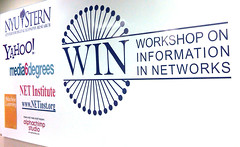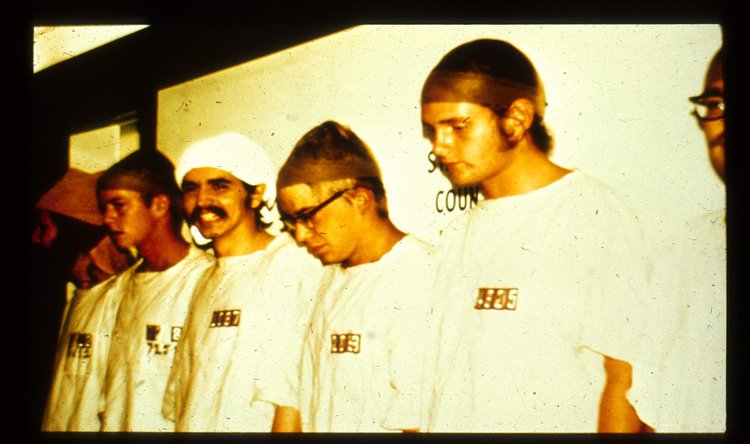Isolation Kills Creative Careers: Get Connected!
/photo: Carrie Cizauskas
It doesn't matter if you are working as a solopreneur or inside a large organization; it is quite intimidating to take the leap and become a graphic facilitator, sketchnoter or visual knowledge worker.
The image of the starving artist slaving away in a dilapidated studio is over-rated. Don't get me wrong: images of artists working in their studios are inspirational; the starving, not so much. In my own creative work, I find that the pain and frustration of isolation from other creative souls is a real killer.
In his new book, Powers of Two, Joshua Wolf Shenk argues that creativity is most commonly the result of at least two people interacting in a variety of ways: complementary collaboration, mutual inspiration, creative rivalry, whatever you want to call it.
My own career as a graphic facilitator began by accident and after years of suffering in CubicleLand.
I was a trained artist who had spent 5 years hitchhiking and teaching my way across Europe, with exhilarating years journaling and working with other artists in Paris and Kraków, Poland.
above: pages from my travel journal (1994)
When I returned to the United States, the corporate world did not know what to do with me, my colorful portfolio of artwork, or my wild ideas about integrating visual learning into schools.
I felt like a coyote caught in a trap, prepared to chew my leg off in order to escape.
Then, a stroke of luck: I received a bizarre assignment from my temp agency and staggered into an incredible place in Chicago that employed motley, colorful, artistic folks like me to do hardcore strategy and innovation work.
above: an inspired view from CubicleLand
Andrew Park of Cognitive Media and RSA Animate fame, describes his experience in this brilliant TEDx Talk, accompanied by one of his own animations.
Before the first moment I witnessed a graphic facilitator at work, I had no idea that anyone could earn a living by listening and drawing to help people come up with groundbreaking ideas.
I had found my tribe!
That was in August 1996, just as the Internet was taking off, and, back then, the crushing feeling of isolation was compounded by a lack of an electronic network, web searches or social media.
However, with all the advancements in tools for connectivity, why do the students in our Rockstar Scribe course still speak of that same feeling of isolation?
“Leap and the net will appear.”
–John Burroughs
Believe me when I tell you: I am not a “joiner.” I am an extroverted introvert and a skeptic when it comes to organized anything. However, I like friends. I thrive on authentic relationships. I am inspired by good people doing good work.
And as an introvert, I have to force myself to join anything. Yet this is, of course, the most important part, because…
Awareness of a community is only the first step in connecting to a community.
above: participants at the 2014 EuViz Conference in Berlin ( photo: IFVP Flickr Group )
Ways to Get Connected
International Forum of Visual Practitioners — This week at EuViz (euviz.com) in Berlin, there are 230+ amazing people from around the world who are dedicated to learning and sharing skills as artists, visual learners, graphic recorders, and facilitators. If you are looking for “that tribe” of visual people, this is the group to join and the annual conference to attend. The 2015 IFVP Conference with be in Austin, Texas. However, if the time/money factor prevents you from attending, you can still become an IFVP Member or find members in your area. ifvp.org
Facebook — if this is more your venue, the Graphic Facilitation Facebook Group is a 3000+ member group, curated to keep the trolls and snarks away. www.facebook.com/groups/2708716559/
The Center for Graphic Facilitation — This website lists graphic facilitators and recorders by region and posts multiple opportunities for training. graphicfacilitation.com
Sketchnote Army — Author of the Sketchnote series of books, Mike Rohde, publishes work from avid practitioners in this community site. sketchnotearmy.com
Breaking Down Your Business — This is a zany podcast hosted by creative business consultants, Brad Farris and Jill Salzman, who tackle the most complex small business questions of our day: How do I make more money without driving myself nuts? Why am I not a billionaire yet? How long is *that* going to take? breakingdownyourbusiness.com/podcasts/
There are in-person group courses offered by The Grove and Brandy Agerbeck; online courses offered by Christina Merkley and our own Alphachimp University; and, a growing network of folks teaching these skills.
Breah Livolsi Parker of Blip Studio describes the flip-side of making a career in this business which involves travels quite a bit of travel and solo work in the studio:
Early on in this work I was told that it would be a lonely ride. I’ve been working as a gr/gf for 4 years, and I think I am just getting the hang of the lifestyle. There is a blank spot usually when I return home… though my dog is always eagerly standing by waiting. Reconnecting with life here in Asheville is something I have learned I must cultivate.
Breah's TEDx talk, addresses this need to find “us” wherever you go.
So, if you still feel isolated or anxious about what path to take — quite a normal feeling, by the way! — I encourage you to reach out to these communities and grow as a visual learner, teacher, consultant, or yet-to-be-defined creative professional.
Contact us know if we can help you out in any way.
Peter Durand
Founder & Creative Directer












